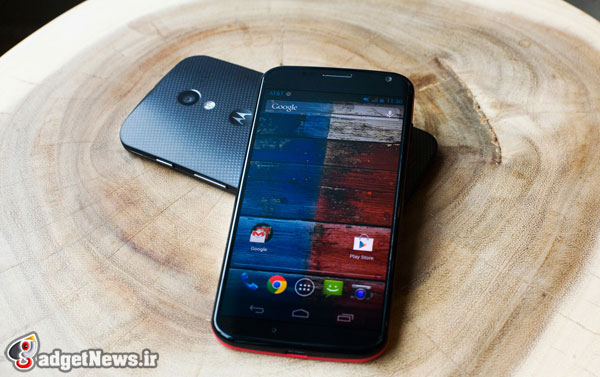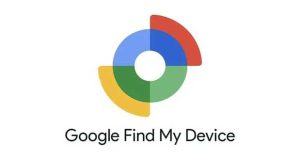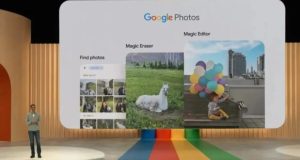
دو سال بعد از خرید بزرگ ۱۲.۵ میلیارد دلاری٬ سر انجام محصول پرحاشيه مشترک گوگل و موتورولا معرفی شده و همه انتظار نوآوری از آن دارند.در اين پست نگاهي داريم به ویژگی جالب موتو ایکس که آن را از ديگر پرچم داران مطرح بازار متمايز خواهد کرد.با گجت نيوز همراه باشيد.
۱. کنترل بدون لمس :
این یکی از ویژگی های اصلی موتو ایکس است٬ راهی برای دسترسی سریع به سرویس Google Now بدون روشن کردن تلفن٬ یا حتی لمس و خارج کردن آن از جیب. Google Now تقریبا هر کاری که سیری در آی او اس می کند را انجام می دهد ولی شگردهای بیشتری نیز در چنته دارد. دومین کنترل بدون لمس موتو ایکس Active Display نام دارد که سیستمی با مصرف انرژی پایین برای نمایش آگاهسازی ها بدون نیاز به بیدار کردن تلفن است و می تواند با شارژ کامل باتری٬ یک روز تمام در خدمت کاربر باشد. موتورولا این دو مورد را راه های ارتباطی بی دردسرتر و طبیعی تری برای محصولش می داند.
۲. گرفتن عکس های سریع :
برای گرفتن عکس کافی است دستی که تلفن در آن است را تکان دهید٬ انگار که مگسی-چیزی روی آن نشسته باشد. در نتیجه موتو ایکس بی درنگ می فهمد که وقت عکس گرفتن است و اپلیکیشن دوربین را باز می کند. جالب تر اینکه برای سرعت بخشیدن به عکاسی٬ کل صفحه نمایش تبدیل به شاتر می شود تا با لمس هر نقطه از آن٬ عکس ثبت شود. با نگه داشتن طولانی تر انگشت هم چندین عکس پشت سر هم گرفته می شود. موتورولا می گوید با این روش ظرف ۱.۵ ثانیه از جیب به عکس (!) خواهید رسید. چیزی که مدعی است برای سایر رقبا ۳ ثانیه یا بیشتر است. البته تکان دادن تلفن هم چندان کار کم خطری نیست.
۳. حفظ شارژ باتری :
وقتی تلفنی مدام در حال گوش کردن به محیط اطراف برای شنیدن یک کلمه یا عبارت خاص باشد٬ یا انتظار این را بکشد که شما تکانش دهید تا اپ دوربین را باز کند٬ عمر باتری در معرض خطر قرار می گیرد. موتورولا برای دوری از این خطر٬ از معماری خاصی که قبلا نیز به آن پرداختیم و سیستم پردازشی X8 نام دارد استفاده کرده که در آن یکی از هسته های بسیار کم مصرف مختص شنیدن کلمات برای فعال سازی Google Now است و به این طریق به بقیه فرصت استراحت می دهد. یک هسته کم مصرف دیگر نیز سنسورها را کنترل می کند -برای مثال شتاب سنج وظیفه باز کردن اپ دوربین بعد از تکان دادن تلفن را دارد.
۴. تایید هویت HANDS-FREE :
اکثر ما برای تلفن هوشمندمان رمز داریم ولی وارد کردن آن به دفعات در طول روز می تواند خسته کننده باشد. موتورولا راه حلی برای این مورد پیدا کرده و آن استفاده از ژتون های پلاستیکی NFC است. اگر فاصله ژتون تا تلفن در حد چند ده سانتی متر باشد (مثلا در جیب)٬ نیازی به وارد کردن رمز نیست. همچنین با نصب ژتون ها در جاهای امنی مثل داخل خودروی شخصی نیز از وارد کردن رمز بی نیاز می شوید.
منبع : www.en.gadgetnews.net
THE INSIDE STORY OF THE MOTO X:
THE PHONE THAT REVEALS WHY GOOGLE BOUGHT MOTOROLA
A
lmost exactly two years ago, Google announced its purchase of Motorola Mobility for $12.5 billion. It was the company’s biggest deal ever, far exceeding previous big buys like YouTube for $1.7 billion and DoubleClick for $3.1 billion. Both of those acquisitions were hugely successful, but the Motorola purchase seemed baffling. Mainly, it seemed to provide Google with valuable intellectual property that would allow the company to defend itself against a tidal wave of patent lawsuits. Motorola—the inventor of the very first cell phone—had a great patent portfolio indeed. But the estimated worth of those patents was less than half Google’s purchase price. The other portion brought Google a money-bleeding Chicago-area-based hardware business. The purchase would almost double Google’s head count with employees who brought little to the bottom line. Employees who were not Googly, in a business that seemingly didn’t scale. What was Google thinking?
Finally, we have the answer. The Moto X, announced today, marks the arrival, finally, of the Google Phone.
The Moto X is the first in a series of hardware products that Google hopes will supercharge the mother company’s software and services. A svelte slab with smooth curves at its edge, purpose-built to fit in the palm of your hand. It is designed for mass appeal, not just a slice of the population like Star Wars fans. It has its share of features that distinguish it from the pack, particularly in a period where some of the market leaders are reloading their innovation guns. These include persistent notifications, user-customizable design components, instant photo-capture, and hands-free authentication.
But the defining feature of the Moto X is it’s a virtual ear, always straining to hear its owner’s voice say three magic words that will rouse it to action: “Okay, Google Now.”
Utter those, and a Moto X user becomes master of the universe—to the degree that Google, its developers, and the users themselves have digitized it. The Android mobile operating system was always intended as a gateway drug to Google products and ads. (“We don’t monetize the things we create,” Android creator Andy Rubin once told me. “We monetize users.”) And Moto X is a tool to free-base Google. That’s why, after years of Rubin and others saying, “There is no Google phone,” when referring to Android implementations, this one finally qualifies.
“If you look at what services are most used on smart phones, it’s obvious that they’re things like maps, mail and search—things that Google does,” says Dennis Woodside, Motorola’s new CEO, who formerly headed Google’s domestic sales operation. “Rather than mess with that, we wanted to build a device that makes those services as easy to access as possible.” Making “touchless control” an access point to Google Now, he says, is a prime example of that strategy. “Google Now is a high-speed on-ramp to all that great stuff that Google is building.”
You get from pocket to picture in about a second and a half, less than half the time that Motorola claims that its competitors take.
Woodside says this in his neatly kept office in Motorola’s California headquarters, just down Route 101 from the Googleplex. In some ways, he was an unlikely choice to rally a flagging engineering-centric cellphone manufacturer. He began his career as a lawyer and a McKinsey consultant. He joined Google in 2003 and moved to Europe to build its overseas sales organizations. In 2009, he returned to the U.S. to run the company’s North America operations. Woodside learned that Google was buying Motorola Mobility by reading it in a newspaper, just before participating in an Ironman triathlon in Canada. A few months later, CEO Larry Page asked him if he’d run Motorola. Woodside guesses that Page was tapping not only his managerial skills, but also the Google values he had absorbed over the last decade, particularly the impulse to think big and push the technology envelope to get results once considered impossible.
The Moto X will be assembled in a newly acquired factory in Texas, rather than in China.
Even before the merger got a formal thumbs-up in May 2012, Woodside was plotting strategy. He did the tough work of layoffs. (It’s no fun handing pink slips to people who spent years working for “the Google of its day,” as he puts it.) But he was generally impressed by the wealth of engineering talent there. The best of those talents had been ill-served by management. They had worked hard despite being frustrated with Motorola’s decline, attributing it in part to a frantic treadmill that churned out zillions of models with limited appeal (catering to specific carriers, demographic, or geographical areas) in order to generate temporary sales bumps to meet quarterly goals. Meanwhile, the company had shied away from long-term investments in riskier, but potentially more innovative products. “We had a lot of shareholder commitments and were churning out 40-plus products a year,” says Iqbal Arshad, who headed the Razr and Droid teams and is now Motorola’s senior VP of product development. “We really couldn’t focus and make a bigger difference.”
Motorola is drastically cutting back on the number of products it produces and selling them in far fewer countries. “We had to get the business much more simpler and focused before we could start building back,” says Woodside. “We went from 45 products to essentially 5 or 6.”
In addition to the core of remaining engineers, Woodside brought in Googlers eager to sign up for the reclamation product, pitching Motorola’s revival as an underdog, startup-style enterprise. Seventy made the move. He also brought in some top outside talent. Job one was developing the phone that would symbolize the company’s turnaround. “You only get to redefine a company once,” says Lior Ron, formerly product head of Google Local and now a Motorola corporate VP of product management. “You only get to do a V1 once. You only get to select those innovation themes once.”
The team decided that the new flagship phone would be designed for wide appeal, as opposed to the Droid’s more limited market slice (males attracted by a sci-fi, sharp-angled sheen). “We realized that so many user needs are being unmet,” Ron says. In his previous post, he had been frustrated that Google couldn’t easily implement its more creative ideas—stuff like getting an instant signal when you walk in a restaurant that starts a stream menus and reviews—because of unaccommodating hardware from different manufacturers. “To do those things you have to innovate in the hardware,” he says. “That’s what got me initially excited.”
Here’s what has the team produced and calls its “innovation themes”:
Touchless Control. This is the signature feature in the Moto X—a way to access the Google Now service without turning on the phone, touching it or even taking it out of your pocket. Google Now not only does pretty much everything that Apple’s Siri does—answers queries, schedules appointments, and plays the song you request—but draws on a vast wealth of data to act as an omniscient personal assistant. (Classic example: It will warn you to end a meeting because it knows that traffic is so snarled, you might not make your next one in time.) It also embodies the grand tradeoff that’s at the core of Google’s ambitions—in exchange for allowing Google to aggregate a bounty of your personal information, drawn from your inputs on multiple services, the company promises to make your life better. By building Google Now into the Moto X front and center, Motorola reveals its potential value to its owner. As Ron says, “This is a great example of Motorola shining a light, via our hardware capabilities, on software and services that Google has.”
A second touchless feature is what Motorola calls Active Display, a low-energy consumption system that provides notifications—and the time of day—without you having to wake up the phone.
Quick Capture Photos. To take a picture, shake your wrist as if a mosquito has lit on your hand and you want to shoo it off. The phone interprets this as photo-time and immediately opens to the camera app. To make things even quicker, the entire screen is a shutter—touch it anywhere to shoot, or hold a finger down for multiple pictures. You get from pocket to picture about a second and a half, less than half the time that Motorola claims that its competitors take.
Battery Conservation. Of course, when a cell phone is constantly listening for a keyword, or waiting for you to shake your wrist, it must burn some energy. When figuring out how to minimize this, the Moto X team drew on conservation techniques the company used on its obscure wrist-based fitness product, the Moto ACTV. They would create a unique architecture for the phone, with eight processing cores. (Thus Google calls this “the X8 Mobile Computing System.”) One of those cores is a super-low-power component that does nothing but listen for the words “Google Now,” enabling the others to slumber away. (If it were not for this approach, says Arshad, such a feature would require three batteries to get through a day.) Another low-power-consumption core monitors sensors—like the accelerometer that signals that you want to take a picture.
Hands-Free Authentication. Only fools don’t protect their phones with a password, but it’s a pain in the neck to punch it in a few hundred times a day. Motorola plans to ease that pain (though not available at launch) by selling plastic tokens that can clip onto clothing—if the tab is within a few feet if the Moto X, no password necessary. (The tokens use NFC technology, built into the phones.) The Moto X will also let you set up password-free “safe zones” like your car.
Customizable Design. Unlike the sharp angles of the Droid, the Moto X sports a clean and hand-friendly industrial design. “I’d love this device to be the equivalent of the person who walks into the party, and it’s not the intimidating person in the corner or the performer, but the one is who is comfortable there,” says Jim Wicks, the longtime head of Motorola’s design who is among the company veterans reveling in the new ownership. “We’re taking this in a direction that works for Motorola now, but it’s also a Google-like device,” he adds. “It’s simplified, but with a sense of play.”
Moto X buyers will be able to customize the phone, choosing from 18 colors and materials for the back of the device as well as different accents for the ring around the camera lens and the volume and on-off buttons. Photos: Brian L. Frank/WIRED
Dennis Woodside, Chief Executive Officer
“People don’t associate Google with phones,” he says. “Motorola’s the brand that resonates to consumers.”
Dennis Woodside, Chief Executive Officer of Motorola. Photo: Brian L. Frank/WIRED
But the flashy part of the Moto X’s personality is what users might bring to it via Moto Maker, a factory personalization scheme reminiscent of mass individualized products like the Nike iD shoe. A website allows Moto X buyers to customize the phone, choosing from 18 colors and materials for the back of the device as well as different accents for the ring around the camera lens and the volume and on-off buttons. Soon after launch, Motorola will offer actual wood veneers. You can even choose headphones in matching or contrasting colors. Those choosing this “virtual SKU” also enter their software preferences, and in four days or less receive the phone, ready to use out of the box. (For a limited time after launch only AT&T customers can do this—later, Motorola will open it to its other carriers: Verizon, Sprint, T Mobile and US Cellular.) Just as with the Kindle, the device already knows who you are—so it’s not surprising that Motorola’s VP of supply side and operations is Mark Randall, who left a similar job at Amazon.
What’s more, Motorola will be assembling these phones in a newly acquired factory—not in Tianjin, China but Texas1. (The facility was originally built for Nokia.) Motorola rebuilt the 480,000 square foot factory to copy the exact manufacturing process used in China, except for the brand-new, highly-automated process that can deliver any of the thousands of potential color combinations that customers specify. “Many supply chain theorists and academics says you can’t do this, but when you tell Google it’s impossible, the reaction is, ‘Let’s go do it,” says Randall.
It will be interesting to see what happens in AT&T stores when people are faced with the option of going through a selection process and waiting four days for a phone, or just picking a black and white phone and leaving with it on the spot. “We’ve done plenty of studies and think there are lots of people who are willing to wait,” says Woodside. “If you start offering materials like wood, the number goes up dramatically.”
Pure Android—almost. In the past few years Google’s Android partners have tweaked the operating system, sometimes slapping on entirely new interfaces. They do this because they feel that running a vanilla system fails to differentiate them from competitors. Overall, the Android ecosystem is threatened by a trend towards “forking” different versions. Motorola takes a polar opposite approach—as a division of Google, its mission is to highlight the vision of the Android team, and so its version is as mildly modified as possible. It’s basically a stock build of Android 4.2.2, with most of the customization around the notifications, voice activation, and the camera. This approach positions Motorola to provide more timely upgrades, which have been problematic in the Android ecosystem. “Nobody’s buying products because of minor incremental improvements to Android,” says Steve Horowitz, Motorola’s head of software (and part of Google’s original Android team). “So let’s rely on what the Android team does and build experiences that will leverage Google services—and then you see things like touchless control, an entry point to Google Now.”
Ever since the Motorola deal was announced, Google has made a point of saying that its company-owned mobile hardware company won’t get special access to the Android team, and will be treated the same as Samsung, HTC and other Android partners. When Woodside repeated this, saying that, for example, Motorola would have to compete just like its rivals to make the next Nexus phone—a model co-designed by Google to showcase the Android system and other hardware innovations concocted by Google—I asked him what possibly could be different in a Motorola-partnered Nexus phone than the current Googly creation that his team has concocted. He was temporarily speechless. “That’s a good question,” he finally said before reiterating how important it is for the Android ecosystem to grow and thrive.
When you talk to Motorola’s leadership team, at a certain point, their message is, unsurprisingly, indistinguishable from Google’s. Certainly both parties must sense that Motorola’s handset competitors—even the seemingly-impervious Apple and Samsung—are moving by increments, not leaps. And they smell blood. “Three years isn’t long term for Google—ten years is long term for Google,” says Arshad. “We want to create that future of cognitive computing—that’s our goal.”
To do so, Motorola Mobility has modeled its long-range research group, Advanced Technology and Products (ATAP), on an outfit known for delivering blockbusters like stealth bombers, autonomous cars, and the Internet. That’s DARPA, the government Defense Advanced Research Projects Agency. Hoping to get similar jaw-droppers, Motorola hired the head of DARPA, Regina Dugan, who brought along her deputy, Ken Gabriel. “We asked ourselves—what were the elements that made DARPA so successful, and could you translate it to an industrial setting,” says Dugan. To her, the key was adopting fast-developing technology just at the point where it can be put to use.
Like DARPA, Motorola’s ATAP hires researchers (it calls them Technical Program Leads) for two-year stints—short enough to put pressure on them to work intensely but long enough to bring something to demo. In an unusual move for a corporate group (but standard for DARPA), the program leads contract with outside researchers to develop parts of their projects. “When we’re trying to solve a hard technical problem, we go where the best people are,” Dugan says. One current project draws on 40 computer vision experts working for 30 entities, including private industry and six universities, hailing from five countries. “In six months we retired the most significant technical risk of the program,” she says.
Even though the project leads’ two-year terms are only half up, some of their work appears in the Moto X—for instance, the password-free NFC token. (Down the road, says Dugan, Google is working on more exotic versions based on temporary tattoos and even edible tokens that you gulp down like pills.) Dugan’s team also contributed to the Moto X’s quick-capture photography and maker-style personalization.
“Some think that it’s hard to get a return on higher-risk projects,” says Dugan. “I’ve found the opposite. When you focus on those things, you yield returns more often—that’s where the epic shit is.”
In short, Google is doubling down on its massive acquisition fee to make phones that push technology and, not incidentally, promote Android and Google services in general. Building Motorola itself into a profitable entity is not an immediate objective. “Of course we can’t be a drain on the company forever,” says Woodside, “but the goal is not necessarily to make massive amounts of money in a short period of time—we have a much longer time horizon than that.”
Lior Ron, Corporate Vice President of Product Management for Motorola. Photo: Brian L. Frank/WIRED
“You only get to redefine a company once.” — Lior Ron, Motorola corporate VP of product management
Woodside does think that profits will come, dismissing the critics who claim that Samsung and Apple have locked up the market. “It’s great when people say that, because they’re just wrong,” he says. “No way the world’s going to be the same. Nokia and Motorola are good examples—companies that had 30 percent market share less than 10 years ago. And here we are today.” (Left unsaid: Motorola and Nokia struggling for relevance.)
In the next few years, he says, a well-funded Motorola will turn itself around by taking advantage of new materials and technology that will, for instance, allow for flexible, virtually unbreakable screens. Motorola also has plans to extend the smart phone market to developing countries and innovate in low-cost plans. And then there’s the crazy stuff coming out of Motorola’s DARPA that no one will talk about yet.
The $12 billion experiment begins today with the Moto X, available later this month for the standard price of $200 with a two-year carrier contract. Woodside would prefer that people not call it the Google Phone: “People don’t associate Google with phones,” he says. “Motorola’s the brand that resonates to consumers.”
But the phone itself knows better. To Moto X, the magic words are “Okay, Google Now.”
1 Correction 4:40 EST 08/01/13: An earlier version of this story incorrectly identified the location of the factory manufacturing the Moto X.
 گجت نیوز آخرین اخبار گجتی و فناوری های روز دنیا
گجت نیوز آخرین اخبار گجتی و فناوری های روز دنیا 





